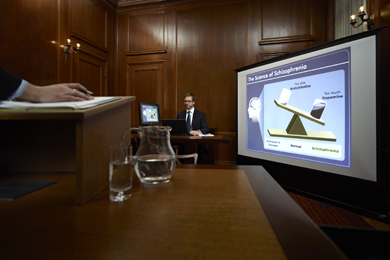Trial Presentation Comprehensive Services for Challenging Court Cases
Trial Presentation Comprehensive Services for Challenging Court Cases
Blog Article
Mesmerize the Court: Essential Components of a Powerful Trial Discussion
Essential aspects such as understanding the audience, crafting an engaging narrative, and grasping spoken and non-verbal communication are critical components of a reliable presentation. As these elements link, they form a natural technique that not just notifies but additionally engages jurors on multiple degrees.

Recognizing Your Target Market
Understanding your target market is an essential aspect of efficient trial presentation. An effective discussion rests on the capacity to grasp the demographics, worths, and tendencies of jurors. This comprehension informs just how disagreements are framed, proof is presented, and sob stories are crafted, making certain that the message resonates with the jurors on a personal degree.
Research indicates that jurors come from diverse backgrounds and might have differing levels of understanding relating to lawful procedures. Additionally, understanding the jurors' possible biases and life experiences allows the trial speaker to anticipate arguments and address worries proactively.
Reliable trial discussion also includes observing jurors' reactions during the process. Engaging with jurors as people instead than a collective system is vital in cultivating a strong link in the courtroom.

Crafting a Compelling Narrative
Crafting an engaging narrative is crucial in assisting jurors with the intricacies of a situation. A well-structured narrative not just simplifies complex legal principles but additionally engages jurors on a psychological level, making the information a lot more relatable and memorable.
This message must reverberate with the jurors' worths and experiences, promoting a link that goes beyond plain realities. This chronological technique can assist jurors adhere to the development of occasions, emphasizing reason and effect.
Including human components-- such as individual tales or anecdotes-- can better enhance the narrative's effect. These components evoke empathy, permitting jurors to envision the consequences of the situation on the real worlds. Furthermore, utilizing a regular style throughout the discussion strengthens the main disagreement, making it easier for jurors to retain vital factors.
Ultimately, a compelling story changes a trial presentation from a plain address of facts into a persuasive tale that astounds the jury, urging them to deliberate with both reason and emotion.
Using Visual Help
Incorporating aesthetic help into a trial presentation can substantially enhance jurors' comprehension and retention of details. Visual products such as charts, diagrams, pictures, and videos can transform complicated legal concepts and proof into quickly digestible formats. By involving multiple senses, these help permit jurors to visualize the case's crucial elements, making it simpler for them to follow along and understand detailed information.
In addition, properly designed visual aids can highlight crucial points and emphasize partnerships between various items of proof. Timelines can successfully highlight the sequence of events, while annotated pictures can clarify particular information relevant to the case. This not only aids in understanding but likewise enhances the story presented by the lawyer.
Excessively intricate or cluttered visuals might overwhelm jurors and take away from the message. Ultimately, effective visual interaction can be a powerful device in encouraging jurors and assisting them reach informed final thoughts.
Understanding Verbal Communication
Effective spoken communication is vital in a test discussion, as it serves as the key ways with which attorneys communicate their disagreements and connect with jurors. Simplicity in language promotes understanding and assists jurors understand complicated issues offered throughout the test.
In addition, tone and pacing considerably impact exactly how messages are received. A positive tone communicates authority, while suitable pacing permits jurors to take in information without feeling bewildered. Lawyers should likewise vary their vocal inflections to highlight bottom lines and maintain jurors' interest throughout the discussion.
Furthermore, the organization of spoken disagreements is crucial. Structuring the narrative realistically and coherently assists jurors adhere to the attorney's logic, making it easier for them to keep vital details. Making use of persuasive techniques, such as narration, can also improve the psychological resonance of the disagreements provided, thus producing a much more extensive link with jurors.
Inevitably, understanding spoken interaction not only enhances an attorney's instance yet also fosters trust fund and relationship with the jury, significantly improving the opportunities of a favorable judgment.

Engaging With Body Movement
Nonverbal communication plays an essential function in trial discussions, often sharing messages that words alone can not reveal. Body language, incorporating motions, position, faces, and eye call, considerably affects just how jurors view the trustworthiness and genuineness of the speaker. A certain stance, get redirected here with shoulders back and an open pose, can instill trust fund, while closed-off body language might recommend defensiveness or uncertainty.

Faces must show the feelings connected with the situation, enhancing the story being presented. A sincere expression throughout a poignant minute can elicit compassion and strengthen the psychological appeal. Inevitably, grasping body movement is vital for effective test discussions, as it boosts verbal interaction and develops a compelling visibility that reverberates with the jury.
Conclusion
In conclusion, astounding the jury necessitates a calculated technique that encompasses recognizing the audience, crafting an visit homepage engaging narrative, utilizing visual aids, mastering spoken communication, and engaging with body language. Each aspect plays an essential function in producing a powerful test discussion that resonates with jurors on both emotional and intellectual degrees (trial presentation). By incorporating these components successfully, legal specialists can dramatically improve their ability to persuade and influence court decision-making
Report this page